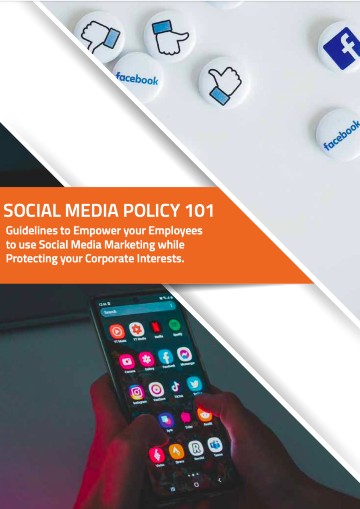
Reiterating the fact that employee motivation is important within an organization seems moot at this point. Yet, most organizations fail when it comes to this exact premise. A survey by Gallup found that over 70% of employees consider themselves disengaged at work.
Do you know the number one reason why they feel disengaged? Yes, you guessed it right – lack of motivation.
It’s the little, unintentional acts that affect employee motivation, and leaders and managers are not observing most of these.
Take rewards and recognition, for example. When was the last time you awarded the top performers in your company? What was the last rewards system implemented within the organization?
If it has been over three months since the last award or accolade was given out, you have failed to recognize the efforts your employees are putting in and thus failed to motivate them.
Since these activities are not a part of business operations, they are usually overlooked. And before you know it, there is dissent among employees, leading to a spike in the attrition rate.
Motivation draws out the best in your employees. It gives them purpose and aligns their goals with the organization’s vision. But keeping your employees motivated and happy is an ongoing, continuous effort. In this article, we’ll explore the effects of properly motivating your employees and then provide you with 16 strategies you can implement to ensure your employees are consistently motivated.
Introduction
- What is Employee Motivation?
- Why is Employee Motivation Important?
- 16 Strategies for a Motivated Workforce
- Measuring & Maintaining Employee Motivation
- Conclusion
What is Employee Motivation?
Employee motivation can be defined as the level of energy, enthusiasm, and commitment an employee shows toward their work. The word motivation, in fact, comes from Medieval Latin and literally means “moving”. This is a good way to understand the term. An employee who is moving, or propelled to do their work, is motivated. They don’t need to be told, coaxed, or scolded, so they finish tasks. They just do it of their own accord, through self-propelled movement.
There’s extrinsic motivation – one that comes from external sources, and intrinsic motivation – self-motivation that comes from within. As we move forward in this article, you’ll see how both are equally important and how each should be managed.
Employee motivation is a hot topic today because we live in an era where motivating employees is actually not easy. With distractions like Instagram, Facebook, etc., and with the many options for earning available to employees, it is difficult to keep them committed and enthusiastic about work every single day.
Especially after a while when tasks become repetitive and monotonous. Organizations have to keep finding ways to keep their talent motivated and committed.
Why is Employee Motivation Important?
1. Leads to Higher Productivity
Employees who are motivated at work are more productive. They are driven by their goals, supported by seniors, provided with the resources they need, and are in an enriching work environment. All of this results in them doing their best at work in terms of effort and time spent, increasing productivity.
Spending time and resources on keeping your employees motivated will surely, in the long run, result in benefits for the company.
2. Fosters Thinking and Innovation
When employees are rewarded for their achievements and success, it drives them to challenge themselves and accomplish more. This often leads to innovation in the workplace.
Motivation fosters healthy competition between employees and also within employees. This drives them to enhance processes, products, and services, resulting in innovation.
3. Maintains an Amicable Workplace
Workplace politics is something that occurs everywhere. When left to fester, it can create a toxic and unbearable work environment. More often than not, employees who are unhappy with their job engage in gossip, and this can be avoided by giving employees a strong sense of purpose.
When employees are motivated by work, their energy is directed in the right direction, and there is no room for animosity between colleagues or management.
4. Employees Stay Loyal, Lowering the Attrition Rate
You have surely heard the adage “employees don’t leave companies, they leave managers”. People look to their leaders for guidance, knowledge, and inspiration. When they get it, they tend to stay loyal to the company and their team.
In fact, a lack of recognition and bad leadership is one of the top reasons why employees quit their job, according to BambooHR’s Bad Boss Index. Motivation happens through guidance and support, so managers who motivate are automatically doing what’s needed to be good leaders. This ultimately reduces turnover.
5. Enhances Brand Reputation
We live in a highly transparent world, and almost nothing remains a secret thanks to the penetration of social media. In such circumstances, maintaining a positive online reputation is vital for a company to retain both customers and employees.
In fact, a Glassdoor report stated that 86% of job seekers check company reviews and ratings before applying for a job there. You can only imagine how much harm a bad review will do to the quality of applicants who apply. To ensure your company gets good reviews, you must ensure your employees are happy in the first place, and motivation will play a big role in keeping them content and loyal.
16 Strategies for a Motivated Workforce
1. Lead your Team with Vision
Don’t just give your employees tasks and targets; show them the big picture, and tell them what they are working towards. Nearly 70% of employees define their sense of purpose by their work, according to a report by McKinsey.
Employees need to know they are a part of something big and working on something meaningful. To give them this sense, leaders have to lead with vision. When they become a part of the business vision and believe in it, they are motivated to give the company their best.
2. Set Smaller, Achievable Targets
Completing milestones has a significant psychological effect on people. It gives them a sense of achievement, elation, satisfaction, and closure. It also motivates them to tackle the next challenge and head towards the next milestone.
Employees need to be given well-defined (and achievable) targets. A great way to keep employees motivated is to set smaller targets, thus increasing the frequency of target completions.
3. Create a Positive Work Environment
There’s tons of research supporting the fact that the work environment – the culture, attitude of management, ambience, rules, and so on, has a big impact on employees’ mental health, happiness, and, consequently, productivity.
An unfriendly or toxic work environment leads to stress and frustration, which significantly degrades the quality of work. Enriching the workplace culture and environment will keep employees happy and motivated.
4. Let Employees be Owners
Authority over a project, task, or team instils a sense of ownership in employees. They are no longer employees working on a task; they are owners of the task, which is a powerful feeling.
We tend to take better care of things we own than the things we rent or borrow, and the same goes for work. When employees are accountable for something, they are motivated to do their best. Handing over authority is also a good way of delegating tasks, something every leader should do.
5. Keep Communication Open
Open and clear communication is critical, especially in remote-work environments. Good communication isn’t just about voicing work-related commands and thoughts but also about creating a personal bond with employees.
Clear communication about work will help employees understand what is expected of them. Along with that, it’s crucial to create a sense of camaraderie within the team through friendly communication. When employees feel they belong in a close-knit, loyal team, they enjoy coming in to work.
6. Create a Career path for your Employees
People today, especially Millennials and Generation Z-ers, expect more from their employers than just a job. They begin planning for their future from a young age, and their career is a big part of this plan.
When you map out a growth trajectory for an employee, it helps them see how their career will unfold. An employee who knows where they are headed and like the direction will be highly motivated and productive because their career path is now aligned with their life’s goals.
7. Recognize Good Performance
Lack of recognition is one of the top reasons why employees quit their jobs, according to Zippia:
 It is clearly also a reason for demotivation. Why would an employee want to deliver a hundred percent when their efforts go unnoticed? Rewards and recognitions are extremely important to boost morale and let employees know that their efforts are being noticed and appreciated. This also motivates them to take up bigger challenges and perform better.
It is clearly also a reason for demotivation. Why would an employee want to deliver a hundred percent when their efforts go unnoticed? Rewards and recognitions are extremely important to boost morale and let employees know that their efforts are being noticed and appreciated. This also motivates them to take up bigger challenges and perform better.
8. Prioritize Employee Wellbeing
A survey by Deloitte found that 84% of millennials experienced burnout at their job. This number has been on the rise since the pandemic, with people experiencing loneliness due to remote work and a lack of boundaries between work and personal life.
An employee who is content and happy at work is going to be motivated to be more productive; this is quite obvious. As a company, it’s important to focus on employee wellbeing actively. Ensure employees are using their leaves and taking breaks, make sure management isn’t overworking employees or pushing for overtime, and so on.
9. Maintain a Relationship of Trust and Respect
People today do not like being micromanaged. They take it as a sign of distrust. Allowing employees to be owners of tasks tells them that they are trusted. In turn, they take the task more seriously and do their best with it. Trust and respect go a long way. It not only motivates employees but also fosters loyalty and respect in return.
10. Reward your Performers (Both Extrinsic and Intrinsic Rewards)
Extrinsic rewards are external, like a bonus or a trophy. Intrinsic rewards are internal and personal, like a sense of accomplishment. Both are necessary to motivate employees.
Extrinsic rewards are straightforward – you should reward employees for hitting milestones. Intrinsic rewards come from ownership. When you allow employees to take ownership, they automatically take pride in their work and feel a sense of elation when it’s completed and done well. Make sure both are happening within the organization.
11. Encourage Friendship and Bonding within the Company
While people enjoyed the freedom of remote work that became the norm due to the pandemic, a big part of the working population also complained of loneliness. The office is not just a place of work but also a place where people get to interact and socialize. Only when forced to remote work, did people realize the impact of socializing at work. It helps people relax, destress, and feel human.
Employers need to foster this sense of socializing at work by encouraging people to mingle and hosting events (even small ones within the office) that get people together. This is especially important if teams are still working remotely. Building positive relationships at work keeps employees happy and motivates them to show up with positive energy.
12. Be a Fair Leader
Office politics creates a toxic environment, and this sort of negative environment drains employees of energy. There are always going to be some ups and downs between colleagues, but as a leader, it is your duty to promote fairness.
When it comes to rewards, promotions, accolades, approving holidays, and so on, ensure you do it unbiasedly. When employees see that the leadership team is fair and just, it motivates them to work hard because they know their efforts will be recognized fairly.
13. Create a Sense of Security
According to Maslow’s hierarchy of needs, safety is one of the most important human needs. It’s hard for an employee to stay motivated when they are worried about the safety of their job. On the flip side, employees who don’t worry about job security can be stress-free and focused on work.
Granted, an employer cannot guarantee a hundred percent job safety, but one thing you can do is be open about how the company is operating and its market position. Knowing that the company is thriving will give employees a sense of safety, and safety will create room for motivation.
14. Be Transparent
Being ‘transparent’ is to include employees in important decisions and discussions. They shouldn’t have to hear important news from external sources; this creates doubt and mistrust. Be transparent about everything – the ups and the downs.
Honesty and transparency also give employees the sense that they are trusted and they are included. This is a powerful motivator, similar to ownership. Of course, some information is private to the leadership team, but otherwise, try and include employees in even big decisions (even if it is just to voice their opinions) and discussions.
15. Give Employees the Resources they Need
Many small and mid-sized organizations follow the principle of spending after earning. They believe in using what is presently available to draw in revenue, and once they have enough cash flow, they invest in upgrading technology and other resources. This can be detrimental to employee morale.
That is because employees have to compensate for the skill deficit that comes from having a technology stack that is not on par with the work being done. Assume you use excel instead of a CRM to track and manage leads, for example. Employees need to spend more time using filters and macros to get the excel file to do operations a CRM would do in just a few clicks. In the long run, this will frustrate your employees and give them the sense that the company is being thrifty.
By investing in resources that assist employees in day-to-day work, you are investing in your company’s future. Give your teams the resources they need, technology, people, or material, and they will give you results.
16. Make Motivation a KPI for Leaders
Managers and leaders within the organization are responsible for motivating those under them. It might not be a part of their job description, but it is extremely vital, and to ensure it is taken seriously, it should be a part of their daily operations or their KPIs.
Measuring attrition rate by teams, for example, will allow you to tell which managers are not able to retain employees. When attrition rate becomes a metric for measuring performance, leaders will make it a point to motivate their teams and retain top talent. You can apply this to other factors that affect motivation at the workplace and create a complete checklist for measuring how well managers are motivating employees under them.
Measuring & Maintaining Employee Motivation
To maintain employee motivation, you need to know when it wanes. There, unfortunately, isn’t a direct metric you can track and monitor to know when an employee is motivated and when they are not. There are, however, indirect ways of measuring the level of motivation.
Punctuality, for example, can indicate how motivated an employee is. An employee who is always late to work is clearly not passionate enough. Employees who constantly miss deadlines are not motivated to deliver work on time. Employees who do not participate in work events are probably feeling socially ostracized. These little things give you an indication of how motivated your workforce is. Here are some things to look out for:
- Punctuality
- Meeting of Deadlines
- Participating in Work and non-work-related Activities
- Volunteering for Responsibilities
- Introducing Innovations
- Being Helpful/Sharing Knowledge
- Owning Mistakes rather than Blaming
Once you know where you stand, you can use the strategies in this article to boost morale and maintain motivation. Sit with employees and discuss their career paths, and once they see a future with the company, they will automatically come into the office on time. Award performers regularly, and they will always meet deadlines. Understand what employees find enjoyable, and you will be able to include everyone in work events. You get the idea.
Lastly, make sure you measure these metrics frequently. If you wait for a year to have a one-on-one conversation about an employee’s future, you might be eleven months too late. Again, make it a KPI, and the management team will make sure they follow these strategies for employee motivation frequently and thoroughly.
Conclusion
As we said at the start of this article, employee motivation seems like something that’s obvious and being taken care of, but more often than not, it turns out to be an area that lacks effort. It is the responsibility of leadership teams to monitor how motivated their employees are and take the steps needed to boost morale. It will, after all, also enhance productivity and help the company grow.
Before closing, there’s one thing that every leader must understand – motivation does not guarantee engagement because it is not the only factor that drives employees. If you’re doing everything to motivate your employees, but you still witness a lack of engagement, enthusiasm, and productivity in some, you might have to take a step back and understand what else is the matter.
Maybe certain employees are unhappy with their job role and want to switch roles or companies. Maybe they have problems at home that affect their performance or they have health issues. Whatever it is, it can be understood through honest and open dialogue. Ensure you keep communication channels open; the rest will fall in place.


























